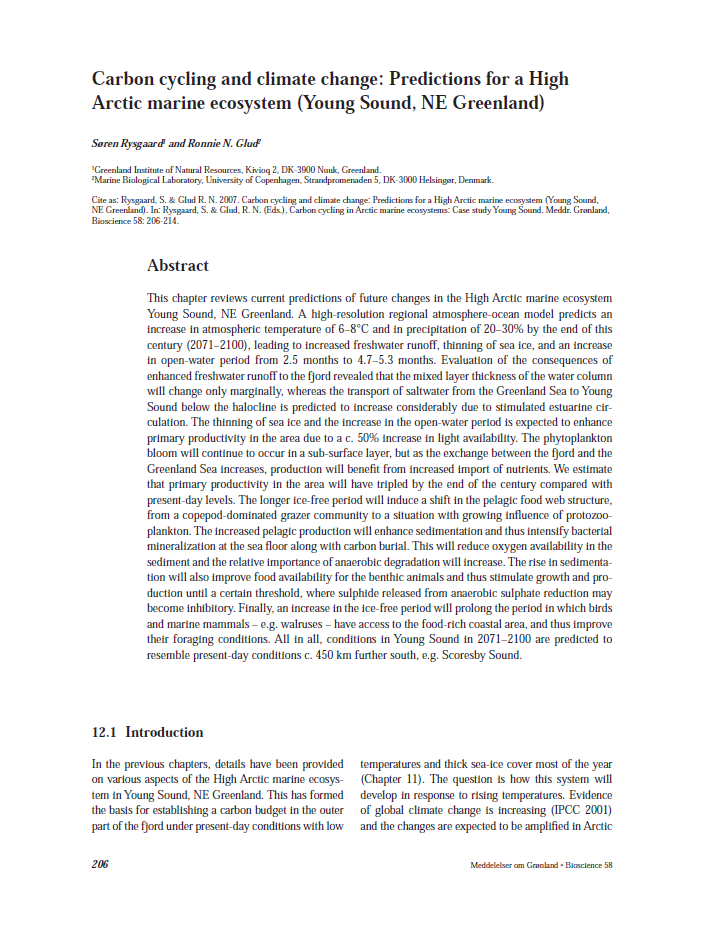Carbon cycling and climate change: Predictions for a High Arctic marine ecosystem (Young Sound, NE Greenland)
DOI:
https://doi.org/10.7146/mogbiosci.v58.142653Abstract
This chapter reviews current predictions of future changes in the High Arctic marine ecosystem Young Sound, NE Greenland. A high-resolution regional atmosphere-ocean model predicts an increase in atmospheric temperature of 6–8°C and in precipitation of 20–30% by the end of this century (2071–2100), leading to increased freshwater runoff, thinning of sea ice, and an increase in open-water period from 2.5 months to 4.7–5.3 months. Evaluation of the consequences of enhanced freshwater runoff to the fjord revealed that the mixed layer thickness of the water column will change only marginally, whereas the transport of saltwater from the Greenland Sea to Young Sound below the halocline is predicted to increase considerably due to stimulated estuarine circulation.
The thinning of sea ice and the increase in the open-water period is expected to enhance primary productivity in the area due to a c. 50% increase in light availability. The phytoplankton bloom will continue to occur in a sub-surface layer, but as the exchange between the fjord and the Greenland Sea increases, production will benefit from increased import of nutrients. We estimate that primary productivity in the area will have tripled by the end of the century compared with present-day levels. The longer ice-free period will induce a shift in the pelagic food web structure, from a copepod-dominated grazer community to a situation with growing influence of protozooplankton.
The increased pelagic production will enhance sedimentation and thus intensify bacterial mineralization at the sea floor along with carbon burial. This will reduce oxygen availability in the sediment and the relative importance of anaerobic degradation will increase. The rise in sedimentation will also improve food availability for the benthic animals and thus stimulate growth and production until a certain threshold, where sulphide released from anaerobic sulphate reduction may become inhibitory. Finally, an increase in the ice-free period will prolong the period in which birds and marine mammals – e.g. walruses – have access to the food-rich coastal area, and thus improve their foraging conditions. All in all, conditions in Young Sound in 2071–2100 are predicted to resemble present-day conditions c. 450 km further south, e.g. Scoresby Sound.

Downloads
Published
Issue
Section
License
Coypyright by the authors and the Commision for Scientific Research in Greenland / Danish Polar Center/Museum Tusculanum Press as indicated in the individual volumes. No parts of the publications may be reproduced in any form without the written permission by the copyright owners.

